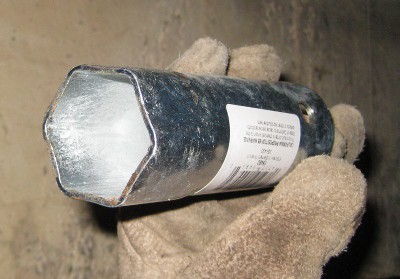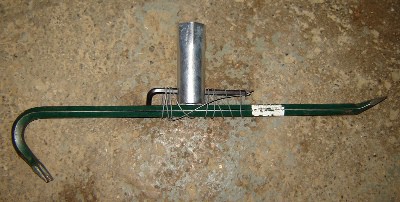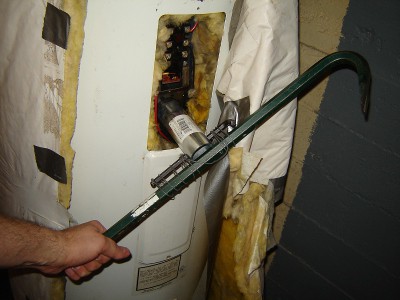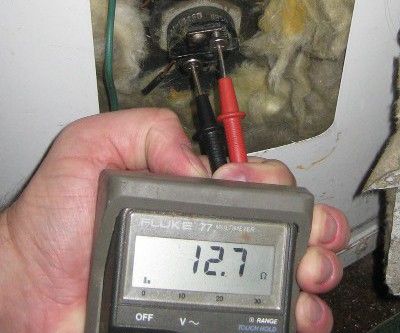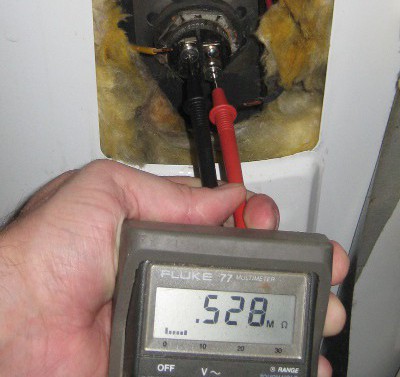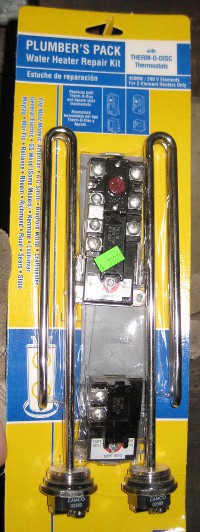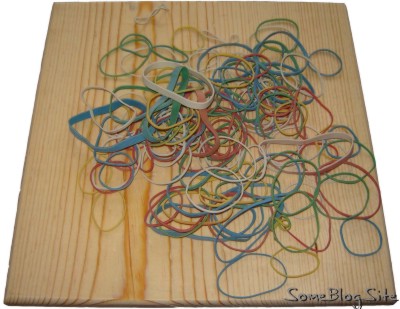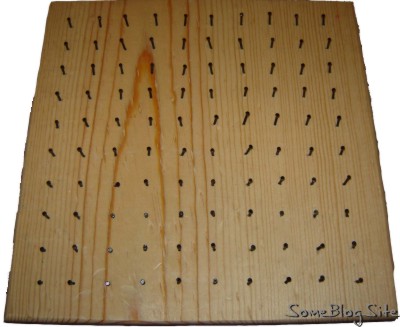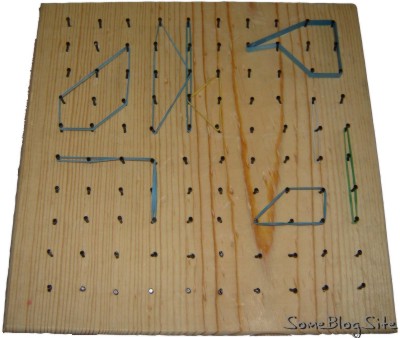I put sheet vinyl flooring in the bathroom. It is the least favorite of my flooring types. By least favorite I mean least favorite to install.
Here are my rankings, in order of easiest to hardest to install:
- Vinyl tiles are the easiest to install but they are also the easiest to mess up.
- Laminate flooring is easy to install. Plus it is not permanent – you can remove it with no destruction to the sub-floor.
- Ceramic tile is nice because the grout will fill in many mistakes. But it requires the most surface prep and can be messy.
- Sheet vinyl is awful because of the large size (unwieldy to maneuver) and messy glue.
I have not installed hardwood floor, but I assume I will like it slightly less than laminate. I plan on never installing carpet myself, so I’m not going to rate its ease of installation. (Carpet, drywall, and now sheet vinyl are on my list of things that are not do-it-yourself). Also, thinset and grout for ceramic tile can be messy, but they clean easily. Vinyl glue is messy and does not clean easily.
Sub-Floor
Ceramic tile needs a flat, solid surface. That would not have worked in the bathroom that now has the sheet vinyl flooring. That floor was not level and not even, so it would have taken quite a few fixes to get the sub-floor in good shape for the ceramic tile. But for the sheet vinyl, we just put down luan plywood so that the surface is smooth. That left slopes and dips and such, but the vinyl conforms to that pretty well.
My Experience
The worst part about the sheet vinyl was the gluing part. The sheet was cut to fit the room exactly. The room is not square – it is more like a L shape. So I couldn’t just unroll it, because no matter which way I rolled it, it was longer than the part of the room where I was rolling it.
The theory is that you spread the glue on the floor and then put the sheet of vinyl on top of that. Then you press it down with a heavy roller and you’re done. If your room doesn’t change width at all, then it might be that easy for you. But if your room has angles or changes widths, think twice about sheet vinyl (or contract it to a professional installer).
Because I could not unroll my vinyl in one shot, I couldn’t put all the glue down at once. The vinyl is thick enough so that it won’t conform nicely. If your roll of vinyl is 8′ 3″ and your walls are 8′ 2.5″, then it’s not going to unroll. It just gets stuck and scrapes your wall. But the vinyl is thin enough that it will tear if you pull on it and it will crease (and tear) if it gets folded.
For my L-shaped room, I had to put the vinyl in place first. Since I couldn’t unroll it, I had to carefully bend it. Once it was in place, I peeled back one leg of the L, put the glue down, and put the vinyl back in place. Then I had to peel back the unglued part of the vinyl. That was both the corner and the other leg of the L. So I had to do two folds or bends without creasing it. Watch the corners – those are the first places that the vinyl starts to rip. But I got it in place, spread the glue on the floor, and restored the remained of the vinyl to its proper place.
All that had to be done with the door closed, because the door opens inward. And the glue gets all over the handle of the trowel but it does not come off very easily. And it has fumes, so I had to keep the window open, which is normally a bad thing to do when it is freezing outside.
Finally, the floor was glued. Then I had to roll it with the 100-lb roller thingy. There was once spot that had a bubble. I would roll over the bubble and the bubble would be pushed along. But as soon as I flattened it there, it would pop back up over where it started. There are no bubbles with any other flooring types. They cooperate nicely. But sheet vinyl does not.
One Chance Only
And the last knock against sheet vinyl is that it is all or nothing when you install it. With the vinyl squares, if one goes on crooked you can peel it up and try again. If a square gets damaged, you can throw it out and use the next one and you’ll lose only a dollar or so. The same is true for ceramic tile or laminate flooring or hardwood flooring. But sheet vinyl is not so nice. Once you put it down, it’s not coming back up. Theoretically, you could try to pull it off the glue and re-set it. But I don’t want to even think about that.
And if it gets damaged in the process, you’ve lost $100-$200. Or you can try to repair it, which will either look bad or create seams. And the reason to get the sheet vinyl is so there are no seams. And don’t forget about the cutting of holes. I had to cut holes in the sheet for this like the plumbing and the heat vent. You have to measure very carefully and cut very carefully. Otherwise you ruin the sheet. With tiles (ceramic or vinyl), you just mess up a single tile at worst, and it’s not that much of a setback. If you mess up multiple tiles trying to get a single hole or notch cut, then maybe you should re-think the idea of installing it yourself.
Seams and Gaps
The vinyl tiles (peel and stick) are the simplest to install and are great for small spaces, not much square footage. The problem is that you need to align the edges perfectly. Ceramic tile is similar, but the edges don’t need to be perfect because there are gaps between tiles and they are filled with grout. So slight offsets are okay, because they will be helped by the grout. But with vinyl tile, there is no grout because there are not supposed to be any gaps. If one tile is skewed ever so slightly, there will be a noticeable gap somewhere in the floor. If the tiles are not perfect, you will notice it.
Conclusion
There’s just too much that can go wrong, too much to worry about, when installing the sheet of vinyl. Main complaints: the glue is annoying and the big sheet is awkward. I like ceramic tile for bathrooms.
Then he built the walls of the house on the inside with boards of cedar; from the floor of the house to the ceiling he overlaid {the walls} on the inside with wood, and he overlaid the floor of the house with boards of cypress.
1 Kings 6:15

 This is Alpha, the first-born, when he was 2YO.
This is Alpha, the first-born, when he was 2YO. This is Beta, the second-born, when he was about 2YO.
This is Beta, the second-born, when he was about 2YO. This is Gamma, the third-born, when he was about 18MO.
This is Gamma, the third-born, when he was about 18MO.
